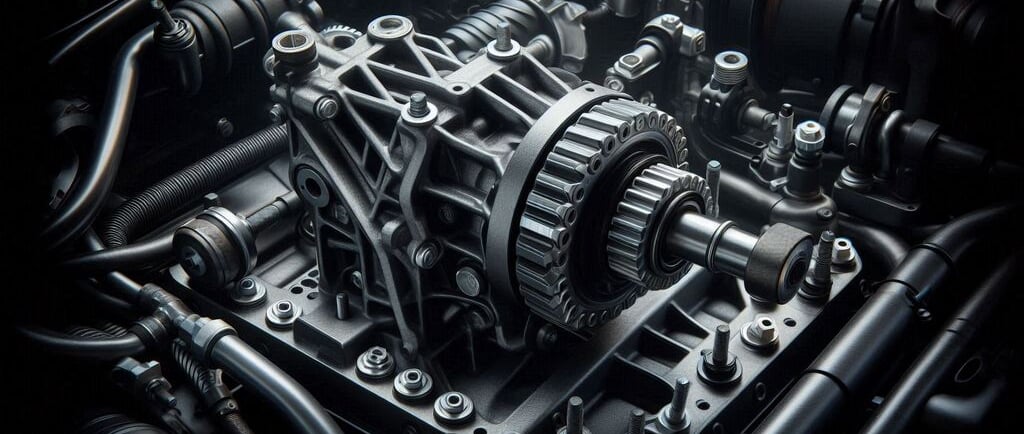Transmission Mounts: Hold the transmission in place on the chassis.
When we think of a car’s engine and transmission system, we often focus on the power they generate, but there’s an equally important component working quietly behind the scenes to ensure everything stays in place:
CHASSIS AND FRAME PARTS
11/13/20244 min read


Transmission Mounts: The Unsung Heroes of Your Car's Performance
When we think of a car’s engine and transmission system, we often focus on the power they generate, but there’s an equally important component working quietly behind the scenes to ensure everything stays in place: the transmission mount. This small but essential part plays a crucial role in stabilizing the transmission and ensuring your car runs smoothly.
In this article, we’ll dive deep into what transmission mounts are, how they work, the signs they may be failing, and why maintaining them is key to your vehicle’s longevity and performance.
What Are Transmission Mounts?
A transmission mount is a rubber or metal component that securely holds the transmission in place on the chassis of your vehicle. Think of it as a cushion or anchor, keeping the transmission aligned and preventing excessive movement that could affect the car’s performance. Transmission mounts also help absorb vibrations caused by the engine and transmission’s movements.
The Key Function of Transmission Mounts
Transmission mounts serve several important functions:
Stabilizing the Transmission: By holding the transmission in place, the mount ensures that the gears remain properly aligned, helping the vehicle shift smoothly.
Reducing Vibration: Transmission mounts absorb and dampen vibrations that occur from the engine and transmission, ensuring a smoother ride for the driver and passengers.
Maintaining Proper Engine Alignment: Without the mount, the engine and transmission could move too much, leading to misalignment and potential damage.
How Do Transmission Mounts Work?
Transmission mounts are positioned between the vehicle's transmission and its chassis. Their primary role is to keep the transmission secure while allowing a small degree of movement to accommodate engine vibrations. Here’s how they function within the system:
Securing the Transmission: Transmission mounts prevent the transmission from shifting or rotating too much. This helps keep the gear assembly in place and ensures smooth shifting.
Vibration Dampening: The mount’s rubber construction absorbs vibrations produced by the engine and the transmission’s movements, preventing these from being transmitted to the chassis and cabin.
Allowing Flexibility: The mounts also allow for a slight degree of movement. This flexibility ensures that the transmission and engine are not stressed by the car’s suspension, which could otherwise lead to premature wear and failure.
In most vehicles, there are at least two or three transmission mounts, each placed in strategic locations to evenly distribute the load and vibrations.
Signs of a Failing Transmission Mount
Like many other components in your vehicle, transmission mounts can wear out over time. Worn-out mounts can cause several issues, including noise, rough shifts, and even damage to other components. Here are some common signs of a failing transmission mount:
1. Excessive Vibrations or Shaking
One of the first signs of a bad transmission mount is increased vibrations felt in the cabin. If the mount is damaged or worn out, it will no longer absorb vibrations as effectively, causing you to feel more of the engine's movement.
2. Clunking or Banging Noises
If you hear clunking or banging sounds when shifting gears or accelerating, it could be a sign that the transmission is moving more than it should be. This movement can cause the transmission to hit other components in the car, resulting in noise.
3. Difficulty Shifting Gears
A worn-out transmission mount can lead to misalignment between the engine and transmission. This can make it difficult to shift gears smoothly, leading to grinding or jerking sensations when driving.
4. Engine Movement
If you notice the engine moving excessively under hard acceleration or braking, the transmission mount may no longer be holding the transmission securely. This could indicate that the mount has deteriorated or broken.
Why Is It Important to Maintain Transmission Mounts?
Transmission mounts are vital to your vehicle’s overall performance. Neglecting them can lead to several issues, including:
Increased Wear and Tear: A damaged transmission mount can put undue stress on the transmission, leading to premature wear and the need for costly repairs or replacements.
Rougher Ride: Worn-out mounts cause vibrations and noises that can significantly reduce the comfort of your ride.
Damage to Other Components: A failed transmission mount can lead to misalignment and damage to other vital components, such as the drive shafts or exhaust system.
By replacing transmission mounts when necessary, you prevent more extensive damage to your vehicle and help maintain its overall efficiency and smooth operation.
How to Replace Transmission Mounts
While transmission mount replacement isn’t a task most DIY mechanics tackle, it’s still good to know how the process works. If you notice signs of failure, it’s important to have the mounts inspected by a professional mechanic. Here’s an overview of what the repair process typically involves:
Lifting the Vehicle: The mechanic will lift the vehicle using a jack to access the transmission and mounts underneath.
Removing the Old Mounts: After locating the mounts, the mechanic will remove the fasteners that hold the mounts in place.
Replacing with New Mounts: The new mounts are installed, ensuring they are properly secured and aligned.
Testing the Vehicle: The mechanic will check for smooth shifting and proper alignment after replacing the mounts to ensure the problem is resolved.
Conclusion: Keep Your Transmission Mounts in Top Shape for Better Performance
Transmission mounts may not be the first thing you think about when considering vehicle maintenance, but they play a crucial role in ensuring a smooth, safe, and comfortable ride. Keeping these mounts in good condition will help prevent vibration, improve shifting, and avoid unnecessary wear on your vehicle’s transmission and related components.



